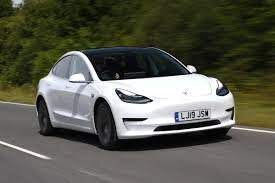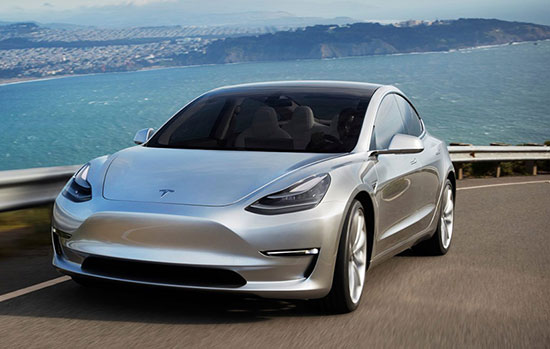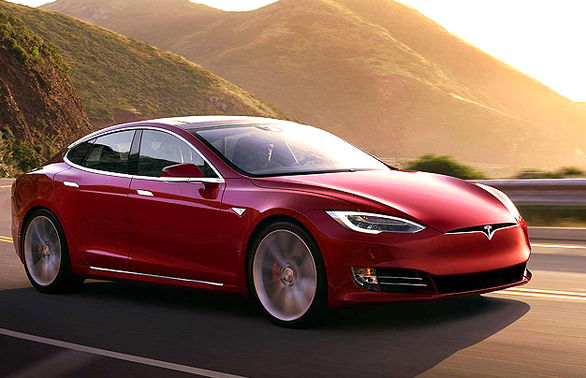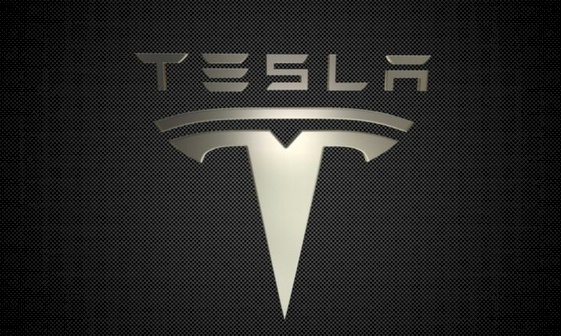The Tesla Model 3 is an all-electric sedan designed by Tesla, Inc. It’s renowned for being a more affordable option in Tesla’s lineup while still offering impressive range, performance, and technology.
Key features include:
- Electric Performance: Quick acceleration, with various battery options providing different ranges.
- Autopilot and Full Self-Driving Capability: Advanced driver-assistance features with the potential for autonomous driving (depending on regulatory approval).
- Minimalistic Interior: A sleek interior design with a large touchscreen display as the central control unit.
- Supercharging Network: Access to Tesla’s vast network of supercharging stations for convenient long-distance travel.
- Constant Updates: Over-the-air software updates improving performance, adding features, and enhancing safety.
The Model 3 has gained popularity for its blend of performance, technology, and sustainability, contributing significantly to the widespread adoption of electric vehicles.
Tesla’s name is not only one of the pioneers in the production of fully electric battery-powered vehicles (EV or BEV), but also one of the most successful and best-selling electric cars in history. The Tesla Model 3 was released in 2017 and has been the world’s best-selling electric car for three consecutive years. Then the Tesla Model Y, which is a small crossover developed on the Model 3 platform, took its place.
This is exactly why the Tesla Model 3, with its final price and very competitive features, is one of the most important all-electric cars on the world market today. After 6 years, Tesla introduced a new version of Model 3.

History of Tesla Model 3:
The Tesla Model 3 was introduced as Tesla’s entry into the more affordable electric vehicle market. Here’s a brief history:
Announcement and Unveiling:
- 2016: Elon Musk, CEO of Tesla, announced plans for the Model 3 in 2016, aiming to create a more affordable electric car to appeal to a broader audience. The initial unveiling event showcased the prototype and generated immense interest, amassing hundreds of thousands of pre-orders within days.
Development and Production:
- 2017-2018: Tesla faced challenges in scaling up production to meet the high demand. The company worked through manufacturing bottlenecks and production issues, leading to a slower-than-anticipated initial production rate.
- Mid-2018: Production ramped up significantly, and Tesla started delivering Model 3s to customers in higher volumes, working to fulfill the backlog of pre-orders.
- 2019: The Model 3 became one of the best-selling electric cars globally, contributing to Tesla’s growth and expansion.
Updates and Improvements:
- Continuous Improvements: Tesla regularly updates its vehicles via over-the-air software updates, enhancing performance, adding new features, and improving safety measures. The Model 3 benefited from these updates, continually refining its capabilities.
Global Impact and Recognition:
- 2020s: The Model 3’s popularity grew worldwide, with Tesla expanding its market reach to various countries, contributing significantly to the acceptance and adoption of electric vehicles on a global scale.
- Recognition: The Model 3 received numerous awards for its design, performance, and contribution to sustainable transportation.

Technical Specifications:
Tesla Model 3 was the first Tesla product in the price range that made it possible for the general public to access an all-electric car. After the production of the Model 3 (and the Model Y as a crossover), owning a mass-produced electric car was no longer a dream. The most important feature of Tesla products, especially the Model 3, was the presentation of a complete combination of a truly functional all-electric car with a useful range in a competitive price range with traditional internal combustion cars, which made it possible for the general public to buy such clean cars.
The basic version of the Tesla Model 3 is available in the rear drive axle type and equipped with only one electric motor, which has a useful range of 435 kilometers according to the American EPA standard. All other production trims have two electric motors (one motor for each axle) and their power transmission system is four-wheel drive. For those people who are stressed about the insufficient useful range of the basic version, the Tesla Model 3S with a larger battery and a useful range of 532 km is one of the best options in the Tesla Model 3 family.
Due to the nature of electric motors in providing instant maximum torque, even the basic and single differential version of the Tesla Model 3 is considered very fast with an initial acceleration of 5.1 seconds. But the performance-oriented version with two engines can reach 100 km/h in just 3.5 seconds to be in the V8 sports coupe category. Also, the Tesla Model 3 battery pack is located on the floor of the room. This significantly lowers the car’s center of gravity and dramatically improves the suspension and steering performance of the car. So Model 3 not only acts like a sports car in terms of initial acceleration, but also in terms of handling and driving pleasure, it is very close to sports cars.
The rims of Tesla Model 3 are of aluminum type, which is equipped with a plastic cover to improve the aerodynamics of the car in motion. According to the tests of the prestigious and famous American magazine Car&Driver, this plastic aerodynamic cover is more effective than you can imagine in reducing air resistance and improving the useful range of the car.
General specifications
Type of car engine: 2 electric motors
Battery capacity is 75 kWh
Power of 491 horsepower
The torque is 493 newton meters
Single speed automatic transmission
Two differential driving axle
Acceleration 3.5 seconds
Speed 255 km/h
The range of the car is 532 km
Euro 6 emission standard
Electric steering wheel
Small sedan body
Aluminum rim type
Dimensions and capacities
Length 4720 mm
Width 1933 mm
Height 1441 mm
The distance between the axles is 2875 mm
Net weight 1765 kg
The number of passengers is 5 people
The trunk capacity is 561 liters
88 liters in front

The diameter of the rim is 18 inches
Options and features
It has cruise control
It has intelligent cruise control
It has uphill stability control
The speed control is downhill
It has traction control
It has stable control
It does not have a car park
It has a front sensor
It has a rear sensor
Radar has a blind spot
It has lane changing radar
It has forward collision radar
It has rear crash radar
It has an anti-lock brake
Brake force distribution
It has an auxiliary brake
It has an emergency brake
It has an electric parking brake
It has an autolight
It has daylight
It has steering wheel control buttons
There is a steering wheel heater
The display has information and entertainment
It has navigation
It has a head-up display
It has a rear camera
The camera has 360 degrees
It has an airbag
It has keyless entry
It has a keyless start
It has automatic ventilation
It has an electric driver’s seat
It has an electric seat for the front passenger
It has a front seat heater
It has a front seat cooler
It has an electric side mirror
It has a side mirror heater
It has a panorama
It does not have a sunroof

Appearance design:
The exterior of the new Tesla Model 3 has seen one of the most important changes. Although the changes in the exterior design of this car are very minimal, but its effect is remarkable. On the outside, the design of the front and rear bumpers, along with the graphics of the lights, have undergone significant changes, which has doubled the attractiveness of this model compared to previous years.
These minor developments have changed the appearance of the Tesla Model 3 from a doll-like and not so beautiful design, to an attractive small-size sedan with a rougher face that is more in harmony with the sporty nature of this expensive electric car. Although the design of the car’s aluminum rims follows the common design style of Tesla, it has a distinctive look with a little change.
interior design :
The interior of the Tesla Model 3 cabin is primarily accompanied by higher quality materials and more accurate assembly, which results in improved final quality and reduced annoying noise inside the cabin. Tesla claims that in the new Model 3, it has used more insulating and sound-reducing materials. The design of the leather cover of the seats has been redone and the large and new 15-inch screen plays a role as a multimedia system and central control. In the new model, the rear passengers can also use the 8-inch personal screen not only to pass the time but also as a control system for some of the car’s features, such as setting the air conditioning system.
The biggest problem with the interior of Tesla products is the over-reliance on the touch screen to control the various features of the car. In other words, except for the few control keys on the steering wheel and the buttons for the side windows, no physical keys have been used to control common everyday systems such as adjusting the steering wheel angle or the settings related to the ventilation system and heating and cooling of the front seats, and almost every change and Adjustment must be done through the touch screen. This is important not only while driving, it causes distraction and disrupts the driver’s concentration and is dangerous, but it also causes mental fatigue of the passengers in the long run.

Conclusion:
The Tesla Model 3 has undeniably made a massive impact on the automotive industry and the broader adoption of electric vehicles. Here’s a concise conclusion:
Revolutionizing the Industry:
- The Model 3 marks a pivotal moment in making electric cars more accessible to a wider audience, proving that electric vehicles can be practical, stylish, and high-performing.
- Its combination of impressive range, acceleration, and tech innovations has pushed the boundaries of what consumers expect from an electric vehicle.
Setting New Standards:
- Tesla’s Model 3 set new benchmarks for range, performance, and technological integration, forcing traditional automakers to accelerate their electric vehicle development.
Challenges and Growth:
- While it faced initial production challenges, Tesla worked through them to increase production rates and improve quality over time.
- Continuous software updates have addressed many early issues and have consistently enhanced the vehicle’s capabilities.
Impact on the Market:
- The Model 3’s success has significantly impacted the global automotive market, accelerating the transition to electric vehicles and sparking innovation across the industry.
Consumer Reception:
- Consumer enthusiasm, seen through high demand and positive reviews, highlights the Model 3’s ability to meet the needs of many drivers, from eco-conscious individuals to those seeking high performance.
Evolution and Continuing Influence:
- Its impact extends beyond its initial release, with ongoing updates and improvements showcasing Tesla’s commitment to evolving its vehicles and setting higher standards for the industry.
In conclusion, the Tesla Model 3’s success has transcended mere sales figures; it has fundamentally altered perceptions about electric vehicles, shaping the future of automotive transportation and driving a paradigm shift toward sustainable, high-performance vehicles.
For more information, visit Tesla’s official website
Read this article : Hyundai Ioniq

Leave a Reply